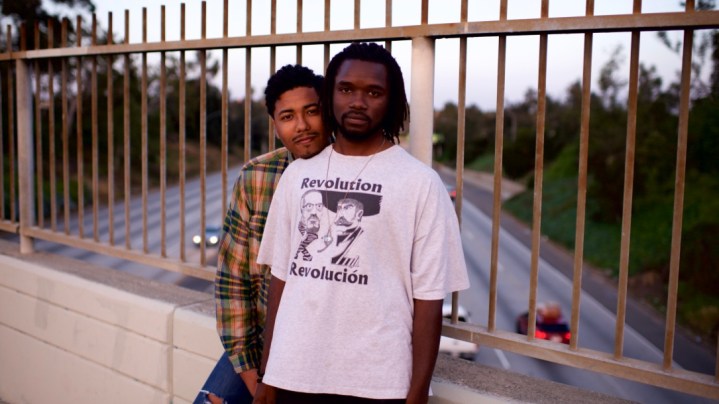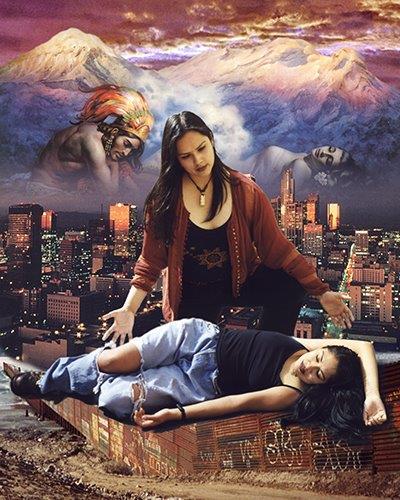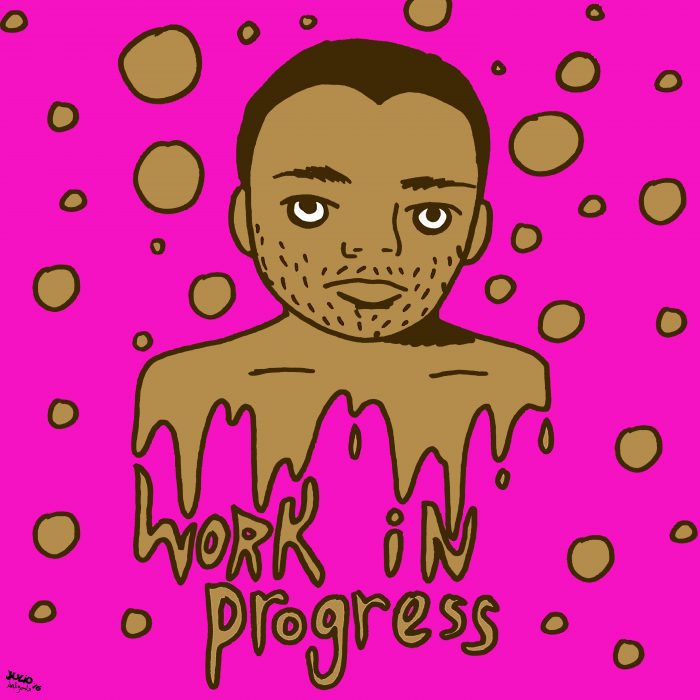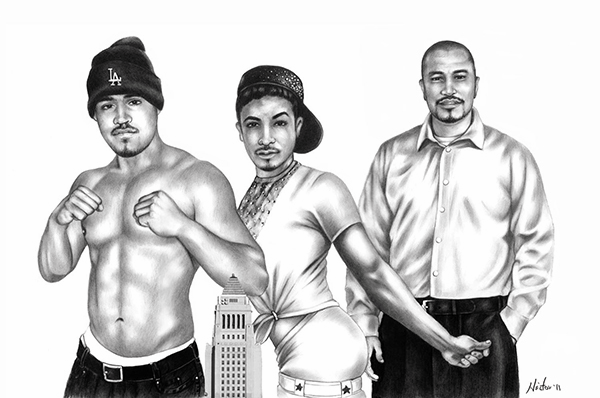1
Joey Terrill
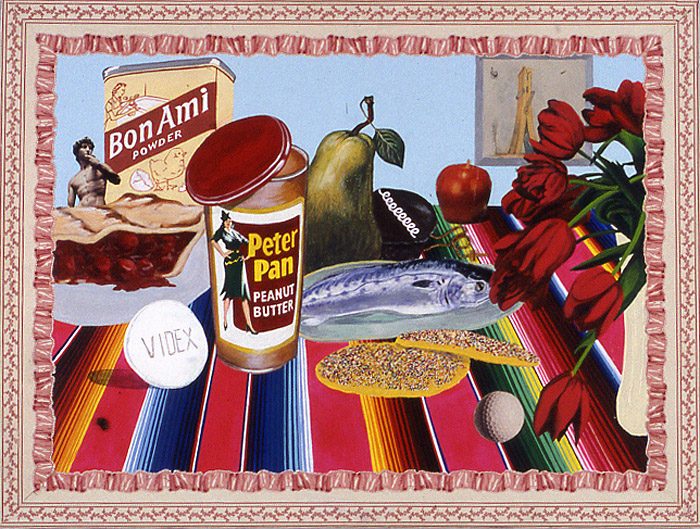
Joey Terrill, former director of VIVA arts collective, has made art for the last 30 years. Terrill, who is in his 60s, knew he’d represent an older generation of artists – something he welcomed. “I already knew that I would be representing the ‘elder’ community, given many of the other artists were younger, which was fine with me,” Terrill said over email. “I think a show about queer Latinx artists’ work that provides a range of identities (Chicano, Mexican, immigrant, Spanish speaking, pocho, Latin American lesbian, non-gender conforming, age, and etc) makes for a richer exploration of the queer experience within the Latino diaspora.”
The LA native – who draws inspiration from Romaine Brooks, Frida Kahlo, and Mexican retablos – has used his art to explore the ways in which being gay and Latino intersect and clash. The exhibition is featuring two issues of Homeboy Beautiful magazine from 1978 and 1979. The magazine is a satirical art pieces that mixes elements from House Beautiful and Cosmopolitan to depict the world around him.
“Homeboy Beautiful was done in a magazine format as a parody of upper-middle class magazines like House Beautiful or Cosmopolitan with their benign [racial] bias … while at the same time critiquing the misogyny, violence, and homophobia I found ithin the gang or homeboy culture around me,” he said. “It was all done tongue-in-cheek and without any nod towards political correctness. In the first issue, I play a ‘journalist’ [named] Santos who ‘exposes’ a homo-homeboy underground party network. In the second issue, we expose a secret homeboy terrorist network that kidnaps a white family and tortures them by forcing them to eat menudo and watch Spanish-language television. But in the second issue, we [also] document a protest of homo-homeboys and takeover of the editorial offices of Homeboy Beautiful. [They] are upset with what they feel was an exploitative photo essay in the first issue. Each issue contains a ‘makeover,’ advice column, hair, makeup, and fashion tips.”
His Still-Life series, which depict what it’s like living with HIV, is also featured in ¡Mírame! Joey began Still-Life in 1987, and he said he will continue working on the series until he no longer requires medication or when he dies. He began the series because he had mixed feelings about the drugs he had to take to stay alive. While he needed them to survive, he also realized how much his dependency benefited the pharmaceutical industry.
“My intent was to borrow the trope of the Tom Wesselmann still lifes from the 60s, which presented graphics from American advertising combined to create skewed compositions that critiqued American consumerist values – or lack thereof,” he said. “In my series, I always place the items on a Mexican blanket/serape as a tablecloth to firmly place them within my Chicano context. From that premise and template, I can ‘play’ with the items indicated and juxtapose things that people may find familiar but also strange. I wanted to place HIV medications in a domestic setting where they compete visually with Cheerios, Coca-Cola, and pan dulce. I remain an HIV advocate and work to address the incidence disparities among communities of color, especially gay male youth.”
